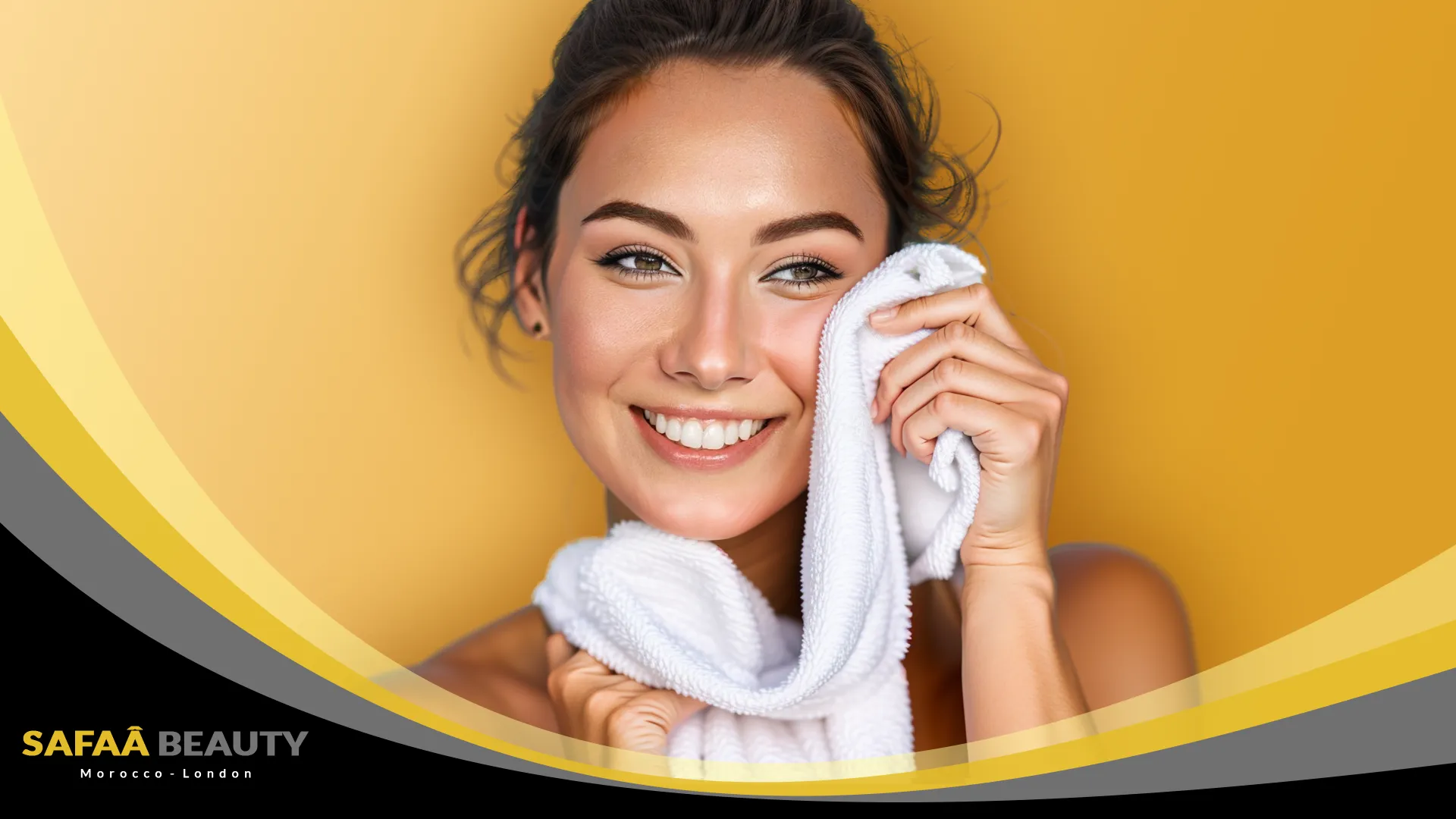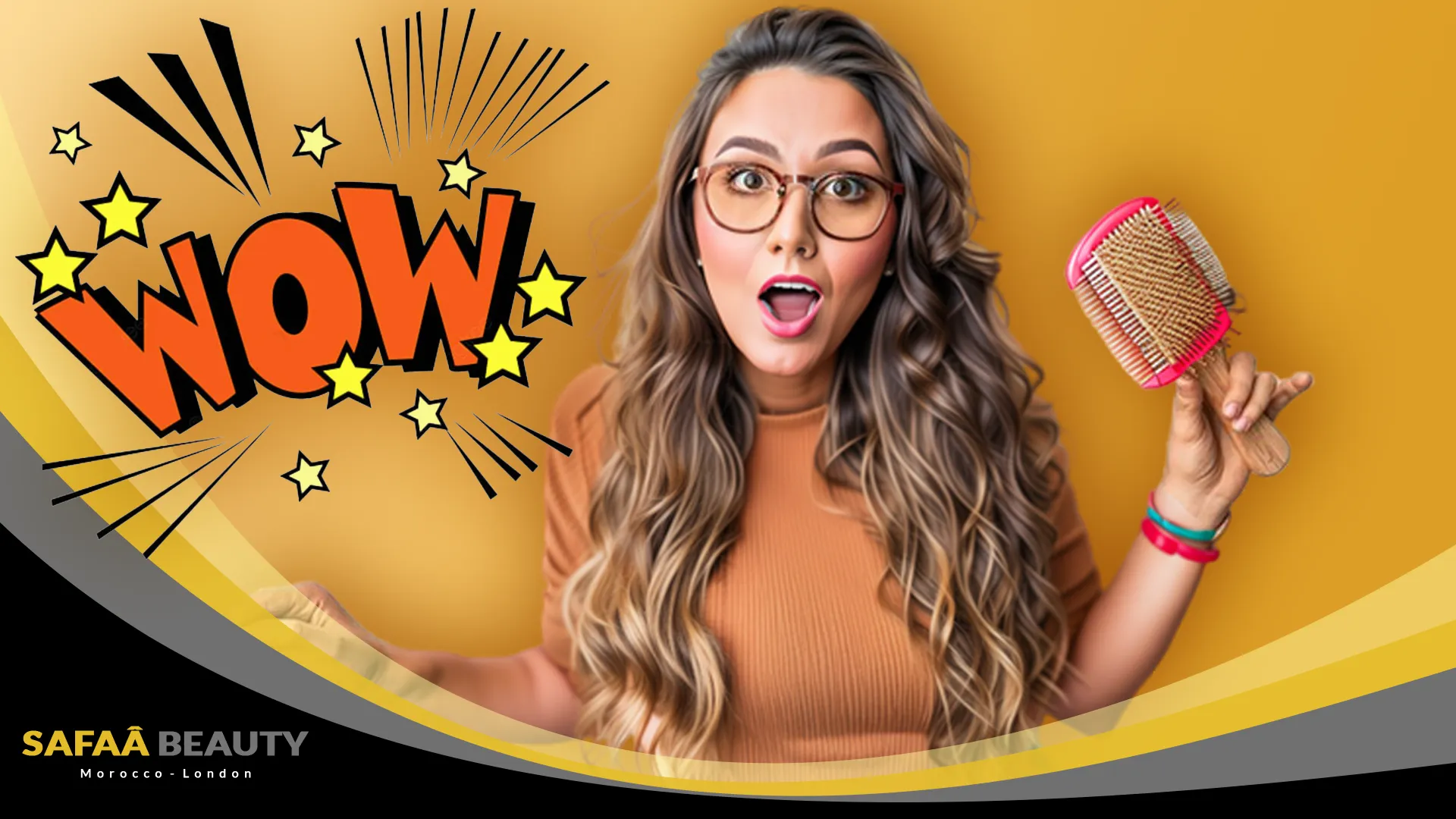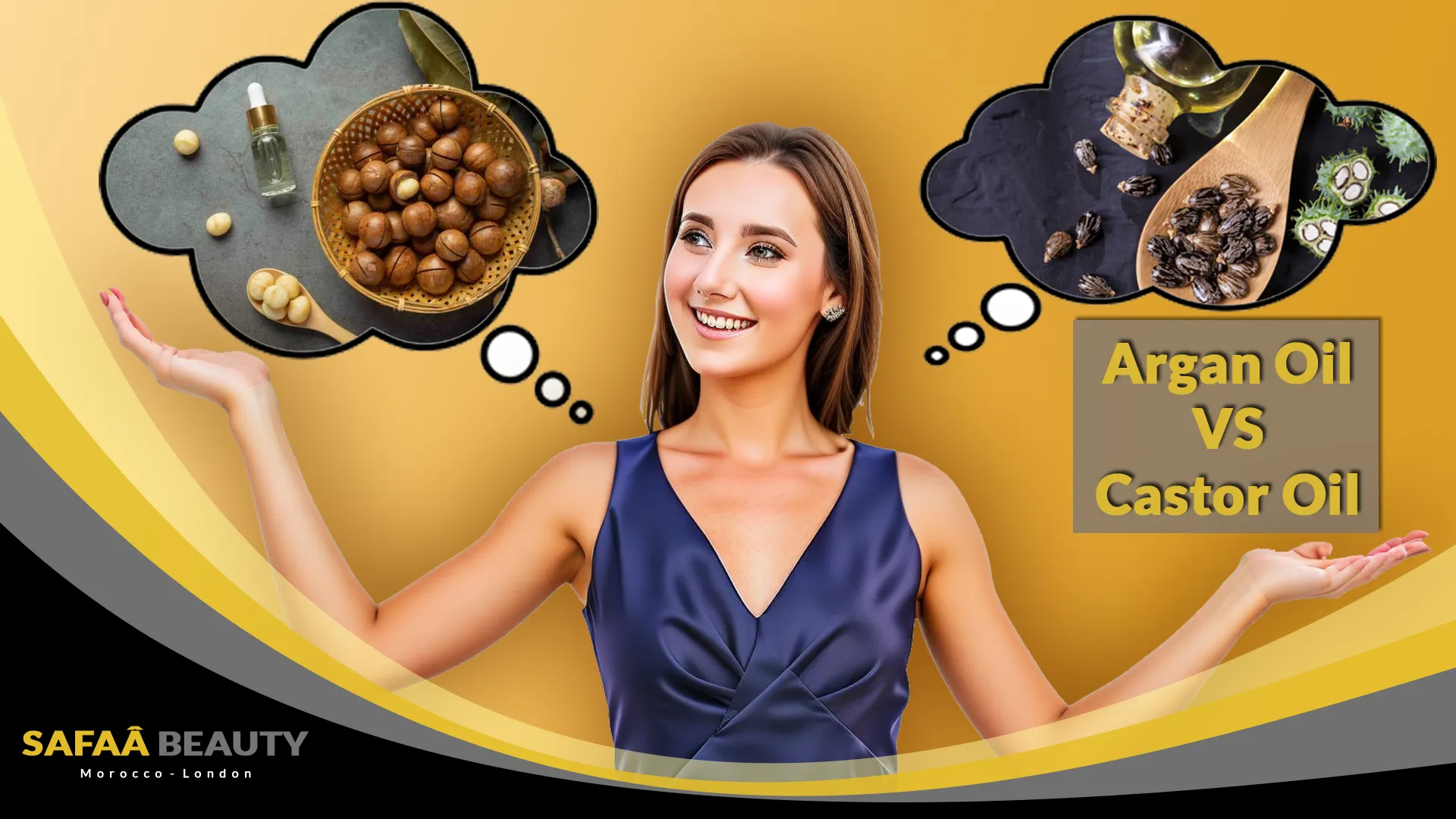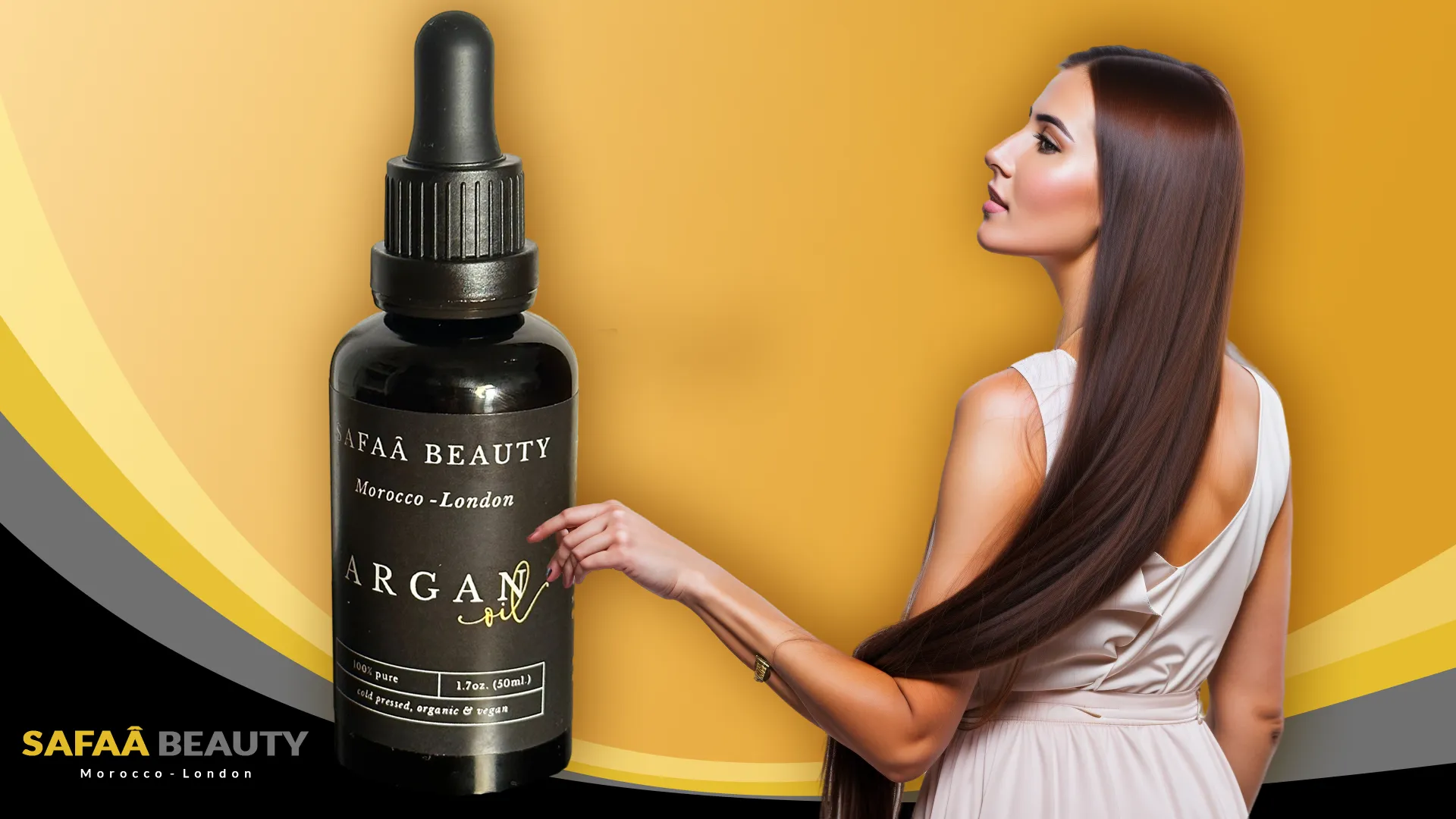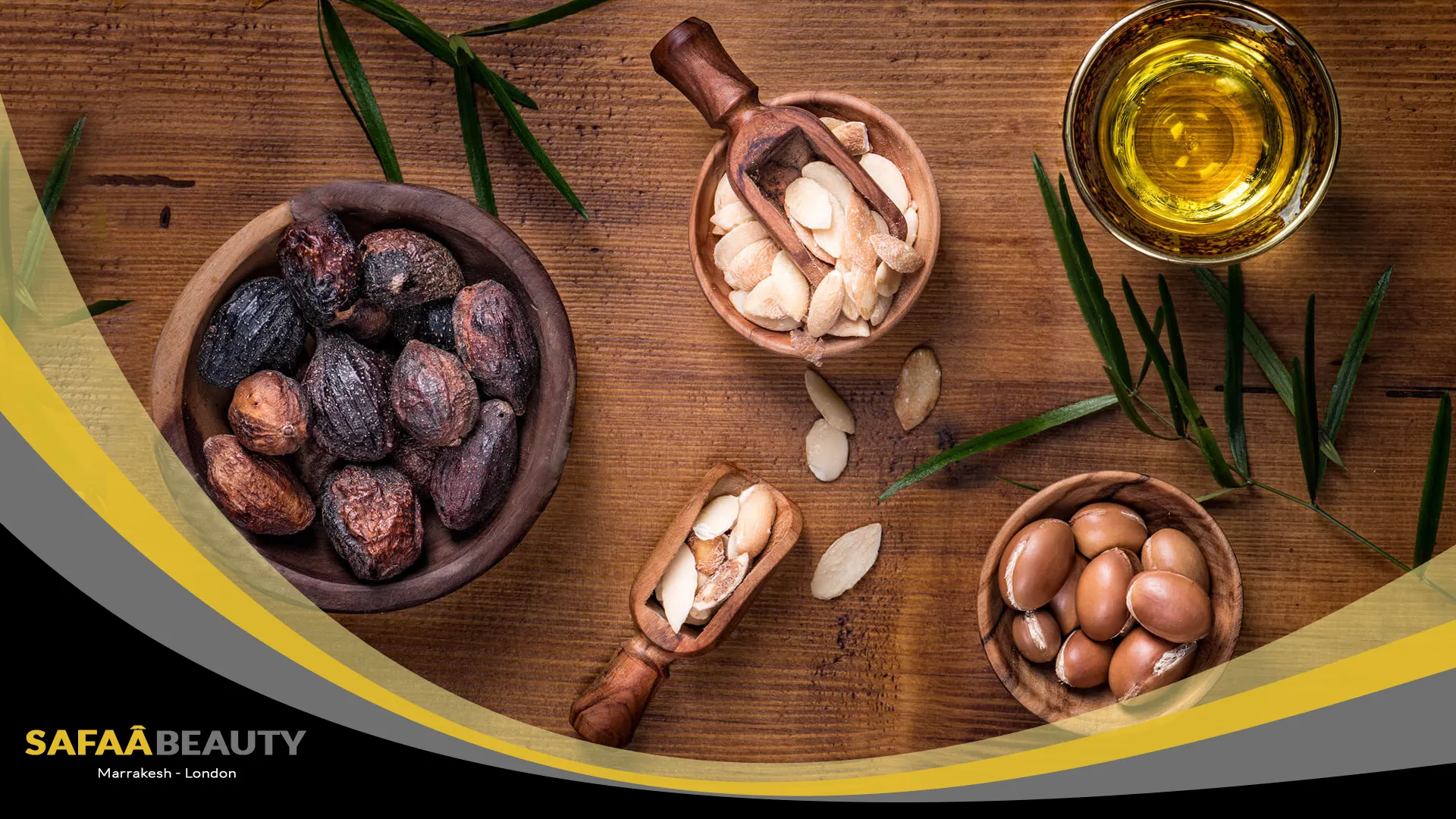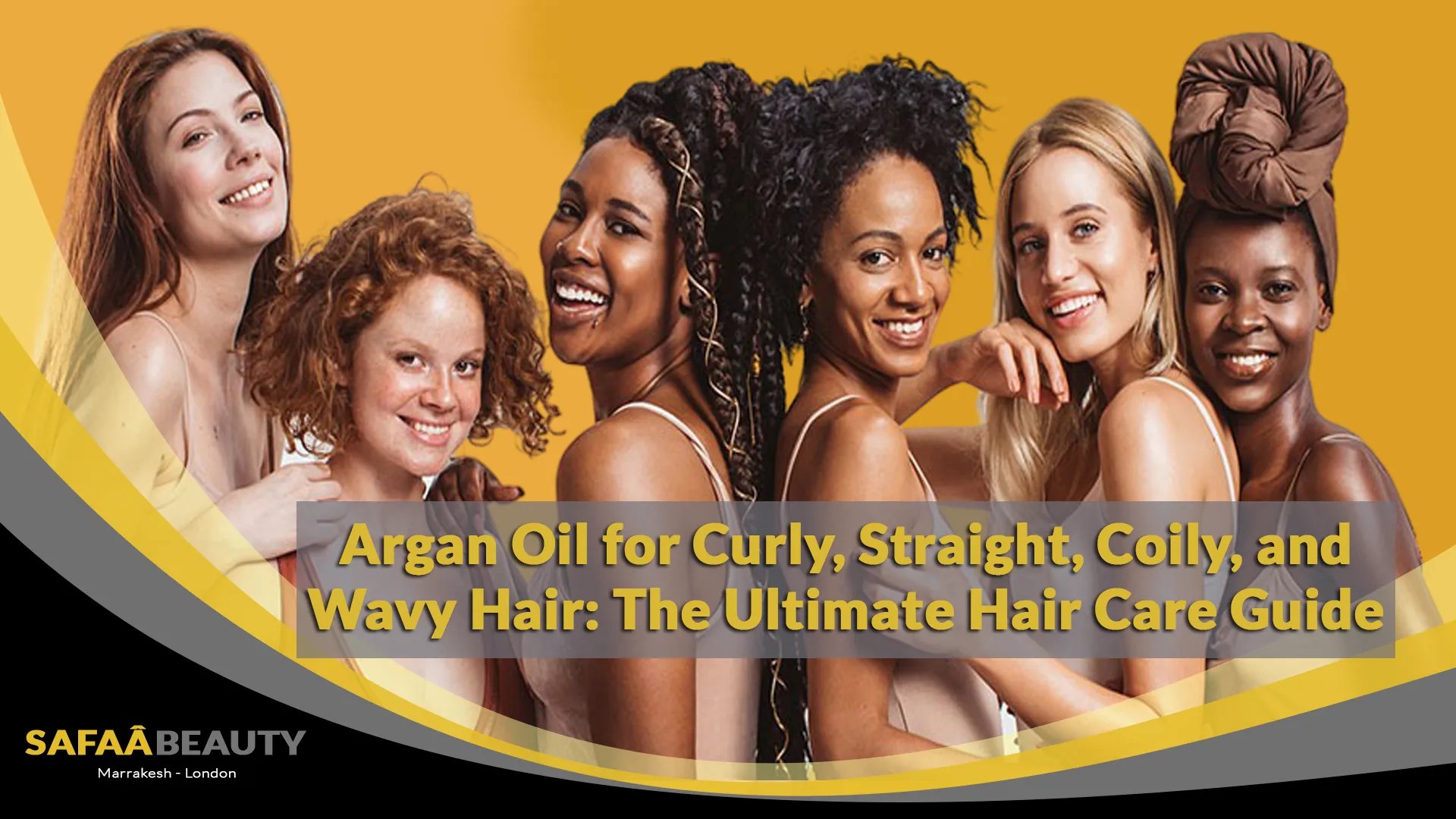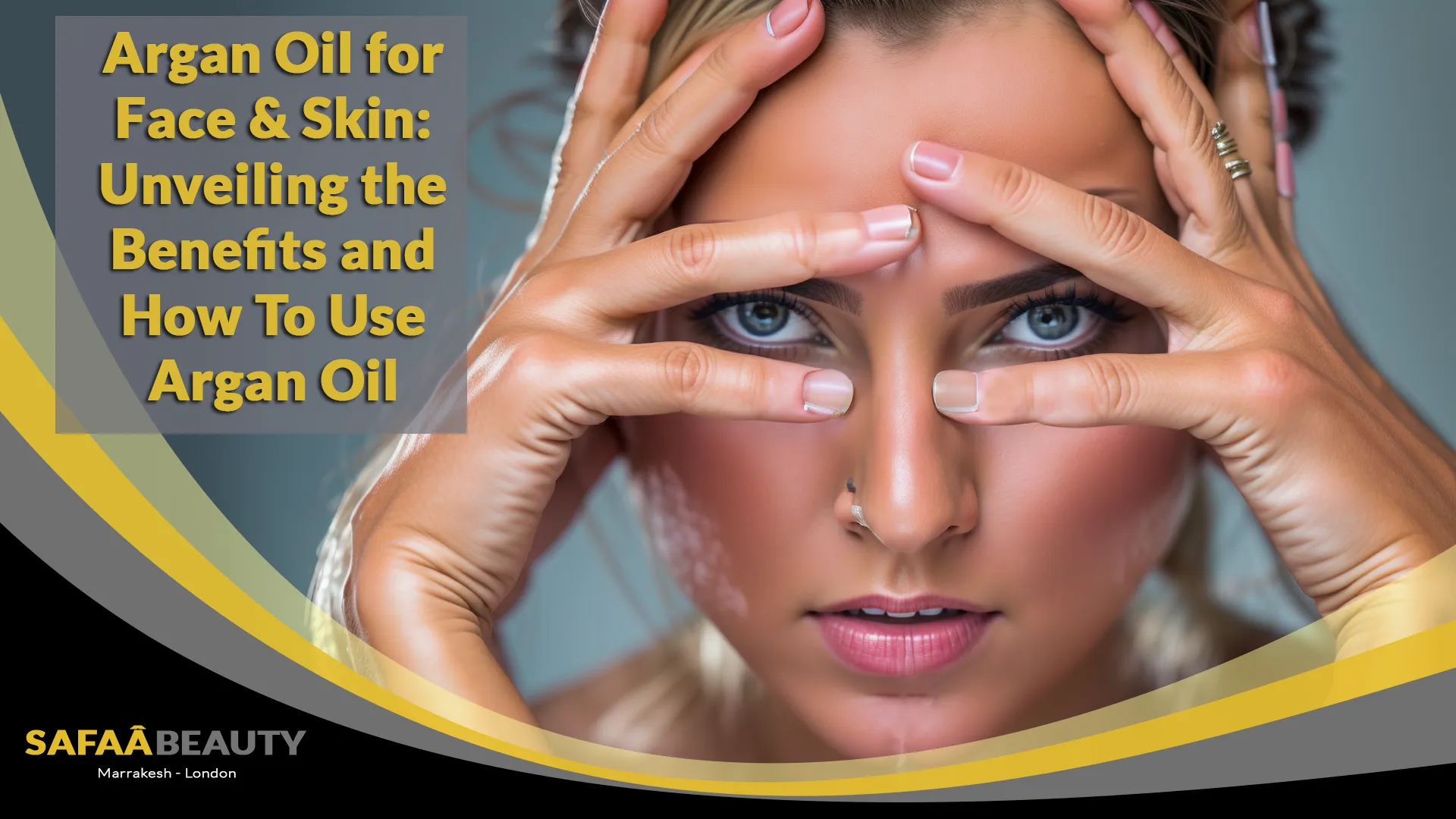The Ultimate Guide to Hair Care: Tips and Tricks for Healthy Hair
Welcome to Safaa Beauty's ultimate guide to hair care! This blog post will explore tips and tricks to help you achieve and maintain healthy, beautiful hair. Whether you're struggling with hair shedding, looking for the best products to use, or seeking advice on how to protect your hair while sleeping, we've got you covered. Let's dive in!
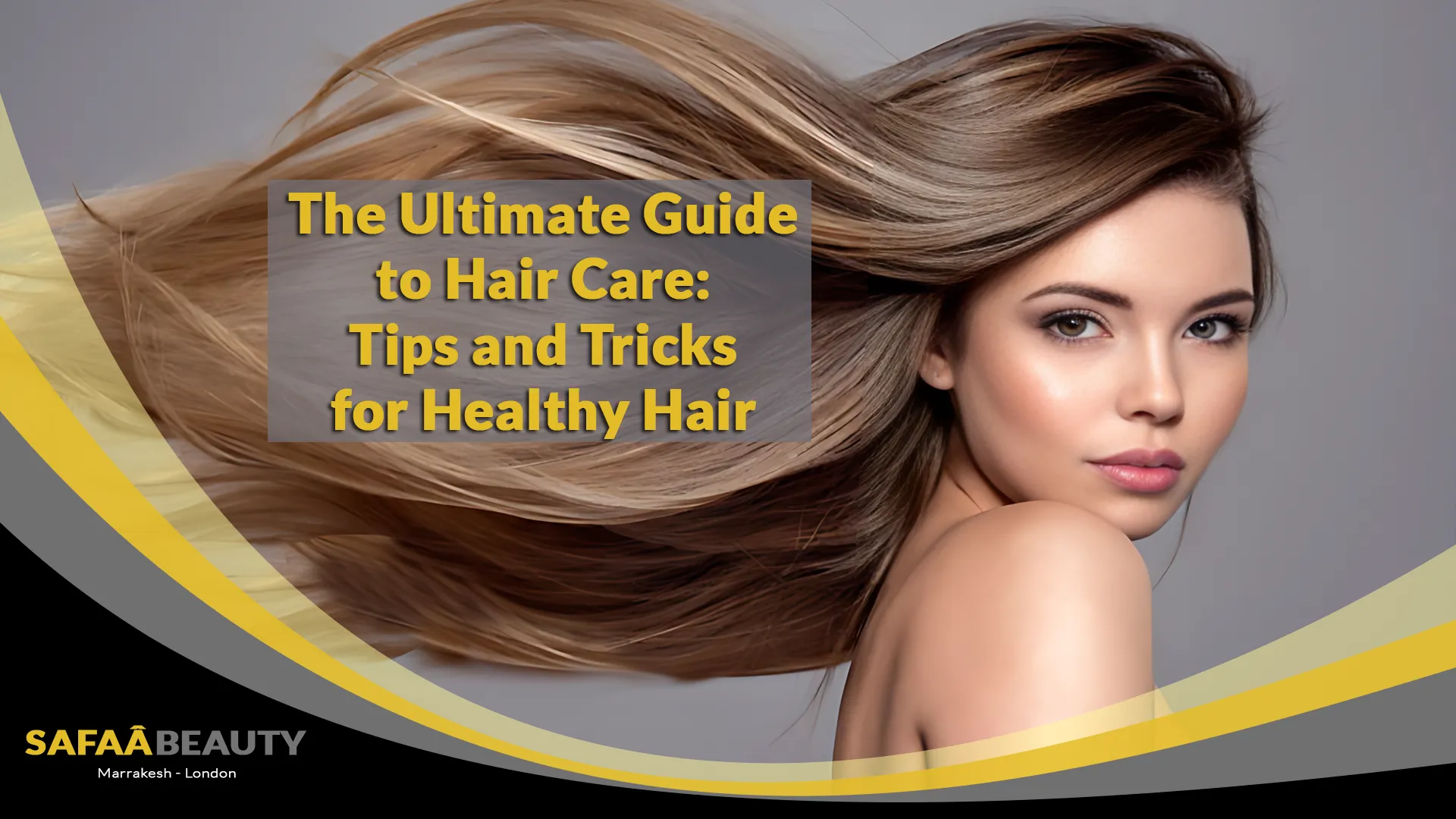
Gaining Knowledge from Cosmetology Books
To dive deeper into the world of hair care, we turned to the wealth of knowledge found in cosmetology books. These books, used in cosmetology schools, provided valuable insights into various aspects of hair care. From understanding the structure of hair to learning about different hair types and their specific needs, the books became our essential companions in this journey.
We delved into topics such as the science of hair, the role of nutrition in hair health, effective hair care techniques, and the importance of using the right products. Armed with this information, we were ready to transform our hair care routine and share our newfound wisdom with others.
The Importance of Washing and Detangling
Washing our hair every three to five days has become a crucial part of our hair care routine. It not only keeps our hair clean and fresh but also helps maintain its health and vitality. However, the frequency of washing may vary depending on various factors such as climate, hair type, and personal preference.
Living in a drier climate allows us to go for longer periods without washing our hair. In such conditions, we could easily stretch it to five to seven days before the need for a wash arises. On the other hand, in a humid climate, our hair tends to get greasy and oily more quickly due to the increased moisture in the air. In such cases, washing every two days becomes necessary to prevent our hair from looking dull and lifeless.
It is important to note that these are general guidelines, and individual differences may apply. If you have specific hair concerns or have been advised otherwise by a dermatologist or hair care professional, it is best to follow their recommendations.
The Benefits of Regular Washing
Regular washing of our hair offers numerous benefits that go beyond just cleanliness:
- Removes Dirt and Buildup: Washing our hair helps remove dirt, sweat, and product buildup that can accumulate over time. This allows our scalp to breathe and promotes a healthier environment for hair growth.
- Controls Oil Production: By washing our hair regularly, we can keep excess oil under control. This is especially important for individuals with oily scalps, as it helps prevent greasy hair and scalp-related issues such as dandruff or scalp acne.
- Prevents Scalp Irritation: A clean scalp is less prone to irritation and inflammation. Regular washing helps eliminate impurities that can cause itchiness, redness, or discomfort.
- Promotes Hair Growth: When our hair and scalp are clean, it creates an optimal environment for hair growth. Regular washing can help remove any clogged hair follicles, allowing new hair to grow freely.
- Maintains Hair Health: Clean hair is healthier hair. Regular washing helps maintain the natural balance of our scalp and hair, preventing issues such as dryness, brittleness, or excessive breakage.
Understanding Hair Shedding and Hair Loss
When we started focusing on scalp care, we noticed some hair shedding. This is a normal process as dead hairs are removed to make way for stronger ones. However, it's important to differentiate between hair shedding and hair loss. Hair loss usually occurs in specific areas and may indicate an underlying problem. Factors to consider when experiencing hair shedding or hair loss include recent changes in routine, new products, and diet.
Many people experience hair shedding on a daily basis. In fact, it is estimated that we lose around 50-100 hairs per day. This may sound alarming, but it's actually a natural part of the hair growth cycle. Our hair goes through different stages, including a growth phase (anagen), a resting phase (telogen), and a shedding phase (exogen). During the shedding phase, dead hairs are pushed out of the follicles to make room for new, stronger hairs.
However, sometimes hair shedding can become excessive, leading to a noticeable thinning of the hair. This can be a cause for concern and may indicate a more serious issue. It's important to pay attention to the pattern and extent of hair loss to determine if it's just shedding or something more.
How to Differentiate Between Hair Shedding and Hair Loss
There are a few key differences between hair shedding and hair loss:
- Pattern: Hair shedding is usually evenly distributed across the scalp, while hair loss often occurs in specific areas.
- Extent: Hair shedding is a normal process, so the amount of hair lost is relatively small. Hair loss, on the other hand, can result in more noticeable thinning or bald patches.
- Duration: Hair shedding is usually temporary and lasts for a few months. Hair loss can be a long-term issue if not addressed.
- Underlying Causes: Hair shedding is often triggered by external factors such as stress, hormonal changes, or certain medications. Hair loss may be caused by genetic factors, hormonal imbalances, autoimmune disorders, or other underlying health conditions.
If you're unsure whether you're experiencing hair shedding or hair loss, it's always a good idea to consult with a dermatologist or trichologist who specializes in hair and scalp health. They can evaluate your condition and provide appropriate guidance and treatment.
Factors to Consider When Experiencing Hair Shedding or Hair Loss
If you're experiencing hair shedding or hair loss, there are a few factors you should consider:
- Recent Changes in Routine: Have you recently made any significant changes to your hair care routine? For example, have you started using a new shampoo or styling product? Changes in routine can sometimes trigger hair shedding or hair loss.
- New Products: Pay attention to any new products you've started using. Certain ingredients or formulations may not be suitable for your hair and scalp, leading to hair problems.
- Diet: Nutritional deficiencies can contribute to hair shedding or hair loss. Make sure you're consuming a balanced diet that includes essential nutrients for healthy hair growth, such as vitamins, minerals, and proteins.
- Stress and Lifestyle: Stressful situations and an unhealthy lifestyle can take a toll on your hair. It's important to manage stress levels, get enough sleep, exercise regularly, and maintain a healthy overall lifestyle.
By considering these factors and seeking professional advice if needed, you can gain a better understanding of your hair shedding or hair loss and take appropriate steps to address the issue.
Nurturing Your Scalp with Homemade Oils
When it comes to caring for our scalp, many products are available in the market. However, one practice that we absolutely love is using homemade oils. Not only are they natural and chemical-free, but they also provide numerous benefits for our scalp and hair.
Rosemary Oil for Hair Growth
One of our favorite homemade oils for scalp care is rosemary oil. This essential oil has been scientifically proven to promote hair growth. It stimulates blood circulation in the scalp, nourishing the hair follicles and encouraging hair growth.
Using rosemary oil is simple. We dilute a few drops of the oil in a carrier oil, such as coconut oil or jojoba oil, and massage it into our scalp. The massage helps increase the oil's absorption and enhances its effectiveness. We leave the oil in our hair for at least three to four hours or overnight if we won't sleep for long.
Argan Oil and Jojoba Oil for Nourishment
In addition to rosemary oil, we also like to use other oils for added nourishment. Argan oil and jojoba oil are two excellent choices for hydrating and moisturizing the ends of our hair.
Argan oil is rich in antioxidants and vitamin E, which help to repair and protect the hair from damage. It is also non-greasy and lightweight, making it an ideal choice for those with oily scalps.
Jojoba oil, on the other hand, closely resembles the natural sebum produced by our scalp. This makes it highly effective in moisturizing the hair and preventing dryness and breakage. It also adds shine and softness to the hair.
We take a few drops of each oil and apply them to the ends of our hair to use argan oil and jojoba oil. We distribute the oil evenly and avoid applying it to the scalp to prevent excessive oiliness. Leaving the oil in our hair for a few hours helps nourish and restore our hair's moisture balance.
Avoid Brushing After Applying Oil
After applying oil to our scalp and ends, avoiding brushing our hair immediately is important. Brushing can cause breakage, especially when the hair is coated with oil. Instead, we gently finger-comb our hair to distribute the oil and detangle any knots or tangles.
Wrap-up
Nurturing our scalp with homemade oils is a simple yet effective way to promote healthy hair growth and nourish our hair. Rosemary oil stimulates hair growth, while argan oil and jojoba oil provide added nourishment and hydration. Remember to avoid brushing immediately after applying oil to prevent breakage. With regular use, homemade oils can transform the health and appearance of your hair.
Mastering the Art of Shampooing and Conditioning
When it comes to hair care, one of the most fundamental steps is shampooing and conditioning. Not only does it cleanse our hair and scalp, but it also prepares us for the next steps in our haircare routine. In this blog post, we will share some tips and tricks for mastering the art of shampooing and conditioning, ensuring you achieve the best results possible.
The Importance of Wetting Your Hair
Before applying any shampoo, it is essential to wet your hair thoroughly. Warm water works best as it helps to open up the hair cuticles, allowing the shampoo to penetrate and cleanse effectively. Wetting your hair also helps to remove any surface dirt or debris, ensuring a more thorough cleanse.
Choosing the Right Shampoo and Conditioner
Every individual's hair is different, and so are their needs. Depending on your hair type and concerns, choosing the right shampoo and conditioner is essential. For instance, a clarifying shampoo can effectively remove the excess oil and residue if you have an oily scalp or product buildup. On the other hand, if you have dry or damaged hair, a moisturizing shampoo and conditioner would be more suitable.
Switching between different shampoos and conditioners from time to time is also essential. Our hair can become accustomed to a particular product, leading to reduced effectiveness over time. By alternating between different formulas, you can ensure that your hair continues to receive the necessary nourishment and benefits.
The Benefits of Shampooing Twice
Most of us shampoo our hair once and rinse it off, thinking that it is sufficient. However, shampooing twice can significantly improve the results. The first wash primarily removes any dirt, oil, or product buildup on the hair and scalp. The second wash allows the shampoo's active ingredients to work more effectively, as the hair and scalp are already clean.
For the second wash, you can enhance the benefits by adding a few drops of rosemary essential oil. Rosemary essential oil has been prized for its hair growth benefits for centuries. It stimulates blood circulation in the scalp, promotes hair growth, and helps to combat dandruff and dryness.
The Art of Conditioning
Conditioning is an essential step in our haircare routine, as it helps to moisturize and nourish our hair. However, it is crucial to apply the conditioner correctly to avoid weighing down the hair or causing scalp issues.
When conditioning, focus on the mid-lengths and ends of your hair. These areas tend to be drier and more prone to damage, as the natural oils from the scalp do not reach them as easily. Applying conditioner to the scalp can lead to excess oiliness and weigh down the roots, making the hair appear flat and lifeless.
Start by applying a small amount of conditioner to your palms and work it through the mid-lengths and ends of your hair. Use your fingers or a wide-toothed comb to evenly distribute the conditioner evenly, ensuring that every strand is coated. Leave the conditioner on for a few minutes to allow it to penetrate and nourish the hair.
Rinse off the conditioner thoroughly with cool or lukewarm water. Cool water helps to seal the hair cuticles, resulting in smoother and shinier hair.
Exfoliating and Masking for Healthy Hair
Exfoliating the scalp is a crucial step in maintaining healthy and gorgeous hair. Just like our skin, our scalp too needs regular exfoliation to remove dirt, excess oil, and dead skin cells. This helps unclog hair follicles, promotes healthy hair growth, and enhances the effectiveness of other hair care products such as hair masks.
When it comes to exfoliating the scalp, we have two options to choose from – chemical or physical scalp scrubs. Chemical scrubs usually contain ingredients like salicylic acid or alpha hydroxy acids (AHAs) that gently exfoliate the scalp without any harsh scrubbing. On the other hand, physical scrubs contain granules or particles that physically scrub away the buildup on the scalp. Both options are effective, and the choice depends on personal preference and scalp condition.
We recommend exfoliating the scalp one to two times a month. Over-exfoliation can lead to dryness and irritation, so striking the right balance is important. Begin by thoroughly wetting your hair and scalp. Take a small amount of the scalp scrub and gently massage it onto your scalp in circular motions for a few minutes. This will help stimulate blood circulation and loosen any buildup. Rinse off the scrub thoroughly with warm water.
After exfoliating the scalp, preparing our hair for the next step – applying a hair mask is important. Before applying the mask, we always wring out our hair to remove excess water. This prevents dilution of the hair mask and ensures maximum effectiveness of the product. Wringing out the hair also helps the mask to penetrate the hair shaft better, resulting in deep conditioning and nourishment.
Once our hair is slightly damp, we move on to applying the hair mask. Hair masks are designed to provide intense hydration, repair damaged hair, and improve overall hair health. They contain nourishing ingredients like oils, proteins, vitamins, and antioxidants. Apply the hair mask generously from roots to ends, making sure to distribute it evenly. You can use a wide-toothed comb to help distribute the mask even more evenly.
Now, let's move on to a little hair care tip that helps reduce frizz and promotes smoother hair – using a microfiber hair towel. After applying the hair mask, gently squeeze out any excess water from the hair and wrap it with a microfiber towel. Microfiber towels are gentle on the hair and help absorb moisture without causing friction, which can lead to frizz and breakage.
Finally, we use a detangler or leave-in conditioner before brushing our hair. This helps to reduce the risk of breakage and damage further while detangling. Detanglers are formulated to make the detangling process easier by providing slip, and leave-in conditioners help to moisturize and protect the hair.
By incorporating scalp exfoliation, proper application of hair masks, and using the right tools and products, we can achieve healthy, beautiful hair. Remember, consistency is key when it comes to hair care. Treat your hair with love and care, and it will reward you with luscious locks!
Protecting Your Hair from Heat Damage
When it comes to styling our hair, many of us rely on heat tools like blow dryers, curling irons, and straighteners. While these tools can help us achieve the desired look, they can also cause a significant amount of damage to our hair if not used properly. That's why it's essential to protect our hair from heat damage.
One of the best ways to protect our hair from heat damage is by using a heat protectant before blow drying. A heat protectant is a product that forms a protective barrier between our hair and the heat tool. It helps to reduce the amount of damage that heat can cause to our hair.
When choosing a heat protectant, look for one that contains ingredients like silicone or proteins. These ingredients help to coat the hair strands and seal the cuticles, providing an extra layer of protection against the heat. It's important to apply the heat protectant evenly throughout the hair, focusing on the ends where the hair is most vulnerable to damage.
In addition to using a heat protectant, it's also essential to use the right techniques when blow-drying our hair. Blow drying is preferred over air drying to protect our hair from heat damage. Air drying can take a long time, and leaving our hair wet for an extended period can weaken the cortex, the inner layer of the hair shaft.
It's important to keep the dryer moving constantly when blow drying to prevent overheating our hair. Using a lower heat setting can also help minimize damage. It's best to start with the hair dryer on a low or medium heat setting and adjust as needed. Additionally, using a diffuser attachment can help distribute the heat more evenly and minimize the direct impact on our hair.
Protecting Your Hair While Sleeping
Your nighttime hair routine is just as crucial as your daytime routine when it comes to protecting your hair. While you sleep, friction from tossing and turning can cause breakage and damage to your hair. That's why it's important to take steps to protect your hair while sleeping.
One way to protect your hair while sleeping is by using a silk cap or pillowcase. Silk is a smooth fabric that helps to minimize friction and prevent your hair from tangling and breaking while you sleep. The slippery surface created by silk allows your hair to glide freely, reducing the chances of damage.
If a silk cap or pillowcase is not readily available, you can also opt for a loose hairstyle before bed. Tying your hair into a loose bun or braid can help prevent it from rubbing against your pillowcase and minimize friction. Using a scrunchie or a hair tie made from silk or satin can further reduce the chances of breakage.
Another tip to remember is to avoid sleeping with wet hair. When our hair is wet, it's more susceptible to damage and breakage. Wet hair is more delicate, and the friction from rubbing against a pillowcase can cause the strands to weaken and break. Before going to bed, make sure your hair is fully dried or at least partially dry to minimize the risk of damage.
Lastly, it's important to practice good hair care habits even while sleeping. This includes avoiding tight hairstyles that can put stress on your hair, such as tight ponytails or braids. Keeping your hair loose and free allows it to move naturally and reduces the chances of breakage.
Protecting your hair from heat damage and while sleeping is essential for maintaining healthy and strong hair. Using a heat protectant before blow drying and following the proper techniques can help minimize heat damage. When sleeping, opting for a silk cap or loose hairstyle can protect your hair from friction and breakage. By incorporating these tips into your hair care routine, you can keep your hair looking its best and prevent unnecessary damage.
Wrap things up
Taking care of your hair is a journey that requires patience and experimentation. By following the tips and tricks shared in this guide, you can achieve and maintain healthy, beautiful hair. Remember to listen to your hair's needs and consult with professionals if you experience any concerns.
Your hair is your crowning glory, and it deserves the utmost care and attention. Whether you have long, short, curly, or straight hair, the key to maintaining its health and beauty lies in understanding its unique needs.
1. Understand Your Hair Type
Every individual's hair is different, and knowing your specific hair type is the first step towards proper hair care. The most common hair types include straight, wavy, curly, and coily. Each type requires different levels of moisture, styling products, and maintenance routines. Consult with a hairstylist or use online resources to determine your hair type.
2. Develop a Hair Care Routine
Consistency is key when it comes to taking care of your hair. Develop a hair care routine with regular washing, conditioning, and styling. Be mindful of the products you use and opt for those that are suited for your hair type. Avoid harsh chemicals and excessive heat styling, as they can damage your hair in the long run.
Additionally, incorporate deep conditioning treatments and regular trims into your routine. Deep conditioning helps nourish and moisturize your hair, while trims prevent split ends and promote healthy growth. Remember, healthy hair starts from the roots, so pay attention to your scalp health as well.
3. Use the Right Hair Products
Choosing the right hair products is essential for maintaining healthy locks. Look for shampoos and conditioners that are free of sulfates and harsh chemicals. These ingredients can strip your hair of its natural oils and cause dryness. Opt for products that are hydrating and tailored to your hair type.
Additionally, incorporate a leave-in conditioner or hair serum into your routine to provide extra moisture and protection. If you use heat styling tools, make sure to apply a heat protectant spray before styling to minimize damage.
4. Eat a Healthy Diet
While external hair care is important, healthy hair starts from within. Make sure to maintain a balanced diet that is rich in vitamins, minerals, and proteins. Include foods such as leafy greens, fruits, nuts, and lean proteins in your meals to nourish your hair follicles.
Drinking plenty of water is also crucial for keeping your hair hydrated and preventing dryness. Hydrated hair is less prone to breakage and looks healthier overall.
5. Protect Your Hair
Protecting your hair from external factors is essential for its health and longevity. When exposed to the sun, wear a hat or use a scarf to shield your hair from UV rays. UV rays can cause dryness and damage to your hair.
When swimming, protect your hair by applying a leave-in conditioner or hair oil before entering the water. This helps create a barrier between your hair and the chlorine or saltwater, reducing damage.
6. 'Listen' to Your Hair
Your hair will often communicate its needs to you. Pay attention to signs of dryness, brittleness, or excessive shedding. If you notice any concerns, consult with a professional stylist or a trichologist (hair and scalp specialist).
Experiment with different hair care techniques and products to find what works best for you. Embrace your natural hair texture and enjoy the journey of discovering different hairstyles and looks.
Here's to a lifetime of fabulous hair! Remember, taking care of your hair is a continuous process. Be patient and stay consistent, and your hair will reward you with its natural beauty.
Hashtags:
#HairCareTips, #HealthyHair, #HairCareRoutine, #HairHealth, #HairShedding, #HairLoss, #ScalpCare, #NaturalHairCare, #HeatDamage, #HairProtection, #SilkPillowcase, #HairExfoliation, #HairMask, #HairProtection, #HairTips, #HairCareJourney
Other Blogposts Our Readers Picked:
Argan Oil for Face & Skin: Unveiling the Benefits and How To Use Argan Oil
Discover how to use argan oil for the face to boost skin health. Uncover argan oil's benefits and application methods for radiant skin.
Use Argan Oil Safely - Your Safe Guide to Harnessing Its Power for Skin and Hair
Uncover safe usage of argan oil for skin and hair. Learn precautions, suitable applications, and best practices for this potent beauty elixir.
Discovering the Bizarre Secrets of Morocco's Argan Tree-Climbing Goats
The Argan Goats in Morocco are the only tree-climbing goats that disperse seeds that are used for making top-quality Argan Oil. The goats climb into the Argan tree to eat the nuts.


